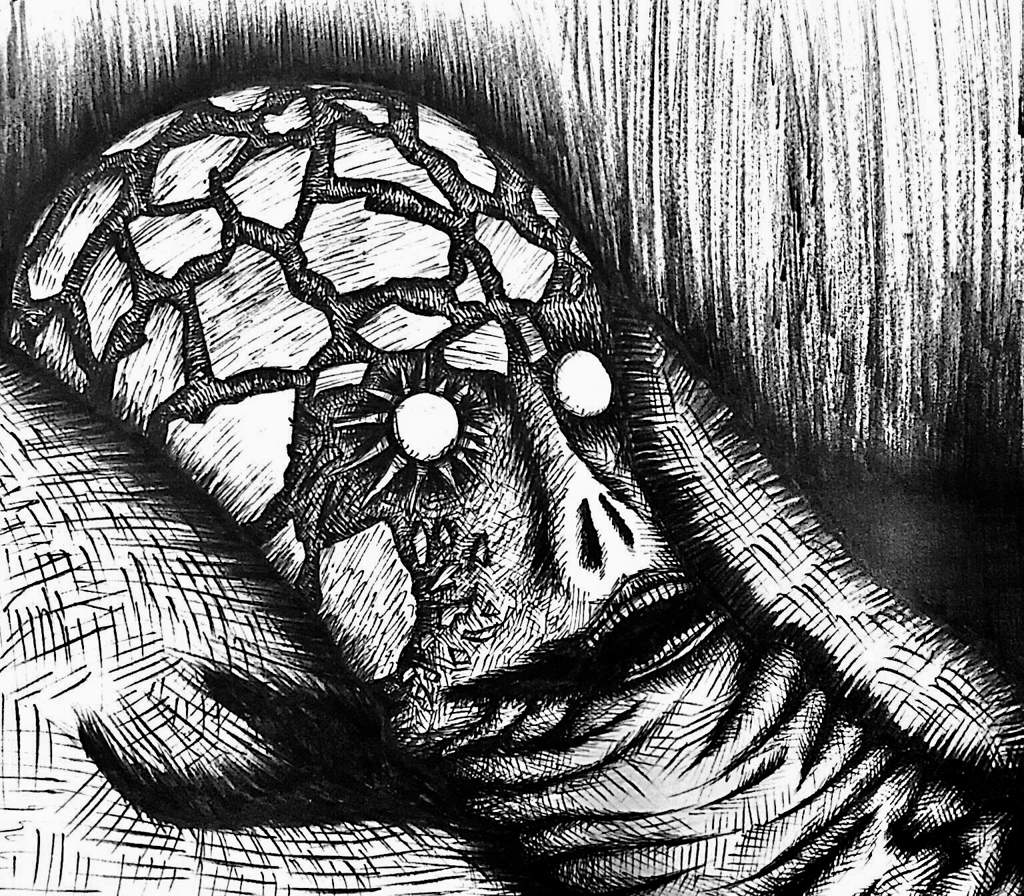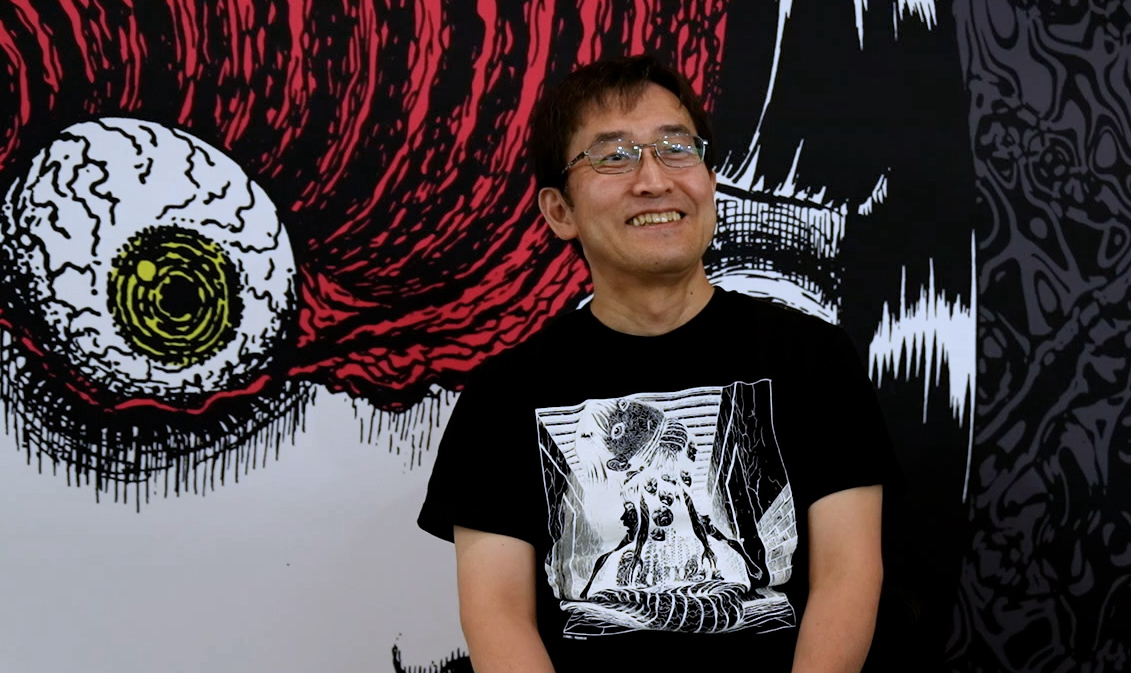If you haven’t explored the chilling body of Japanese horror, here’s a manga artist, Junji Ito, you should look into first. Learn more below.
Junji Ito, the renowned Japanese manga artist, has carved his name into the archives of horror as a modern maestro of the macabre. With his extraordinary ability to weave intricate tales intertwined with nightmarish visuals, he has captured the hearts of horror aficionados across the globe. Born in the quiet town of Gifu, Japan, in 1963, Ito’s ascent to fame was marked by his unparalleled talent for crafting narratives that plunge deep into the human psyche’s darkest corners. His remarkable storytelling, combined with his exceptional artistic prowess, sets him apart in the world of horror manga.
Ito’s body of work is a chilling exploration of existential dread, body horror, and psychological terror. His stories often revolve around ordinary individuals thrust into the realm of the incomprehensible and the horrifying. Uzumaki, a tale of a town ensnared by spirals, and Tomie, the eerie story of an immortal girl, stand as shining examples of his iconic creations. Ito’s artistic style is equally distinctive, with meticulously detailed, grotesque imagery that leaves an indelible mark on your psyche. His contributions transcend borders, influencing artists and creators worldwide.
What makes the author even more unsettling is the format in which his stories and novels are modeled; instead of leaving the interpretation of the bizarre and other-worldly to the readers, the author feeds them with his unsettling vision, and since he is an illustrator along with writer, the way he projects nightmare after nightmare on paper is just as macabre as the storytelling element of his enterprise. However, Ito’s versatility as a horror artist is not limited to a single medium. He expertly navigates various formats, from short stories to novellas and full-length novels, showcasing his ability to craft nightmares in diverse ways.
The Best Works of Junji Ito
In his shorter works, Ito displays a talent for condensing terror into bite-sized narratives. These short stories often focus on a single, spine-tingling concept, exploring it to its fullest extent. The brevity allows Ito to deliver quick, intense shocks that linger long after the last page is turned. For instance, his collection of short stories, such as Fragments of Horror and Shiver, presents readers with a range of unsettling scenarios, each being uniquely disturbing. The stories might be brief, but the range of emotions and the amount of terror they invoke in the readers is unparalleled.
Here are some of Junji Ito’s best works:
The Enigma of Amigara Fault

The Enigma of Amigara Fault is a spine-tingling short story by Junji Ito that ensnares its readers with an unsettling premise. It all begins after a colossal earthquake exposes a peculiar fault line near the fictitious Amigara Mountain. As curious onlookers gather to witness this geological marvel, they stumble upon something far more disconcerting – the fault is riddled with perfectly human-shaped cavities, each eerily tailored to specific individuals who experience an irresistible compulsion to enter them.
What renders The Enigma of Amigara Fault so profoundly gripping is the overwhelming sense of dread and disquiet it elicits. Ito adeptly delves into the realms of existential horror as his characters grapple with the inscrutable urge to enter these holes, fully aware that it leads to an unknown and probably horrifying fate. The narrative delves into the themes of obsession, compulsion, and the uncanny interplay between psychological and supernatural horror. The atmosphere is charged with tension, intensified by the grotesque and claustrophobic imagery, crafting an indelible experience that lingers hauntingly in the psyche of readers long after they’ve turned the final page.
Long Dream

Long Dream is a deeply unsettling short story that explores the eerie concept of never-ending dreams. The tale unfolds when Tetsuro, the protagonist, encounters a patient named Yukie in a hospital. Yukie describes her increasingly lengthy and vivid dreams, which defy the bounds of time and reality. These dreams transform into a nightmarish cycle, where Yukie’s consciousness is trapped in relentless and terrifying visions.
Long Dream is truly terrifying because it contemplates the fragility of human perception and the unending agony of perpetual nightmares. The narrative submerges readers in a world where the distinction between dream and reality blurs, unsettling the very core of our existence. This merging of dreams and waking life invokes a profound sense of existential horror, leaving readers haunted by the notion that they, too, might be ensnared in an eternal nightmare without any means of escape. Ito’s talent for crafting an unyielding and nightmarish atmosphere is what makes “Long Dream” an exceptionally disquieting and enduring tale.
The Human Chair

The Human Chair centers around an unassuming antique chair that hides a malevolent secret. The story follows a young girl who happens to walk into a furniture store, where the owner leads her to a kind of chair with a history. The chair was in the possession of Togawa Yoshiko, a renowned author who received an intriguing manuscript in her mail telling the story of a chair. Soon, the new armchair in her drawing room becomes the cause of suspicion surrounding something supernatural and terrifying.
The story is visually chilling, Ito’s extraordinary talent for rendering grotesque and nightmarish scenes. As characters take their seats in the cursed chair, readers are drawn into a world filled with surreal and unsettling horrors. His intricate artwork masterfully captures the eerie and unsettling nature of the chair’s effects, gradually intensifying the visuals as the story progresses. The grotesque transformations and nightmarish landscapes are equally terrifying and visually captivating, showcasing his ability to seamlessly blend the ordinary with the macabre, making The Human Chair a profoundly disturbing and unforgettable tale.
Why Should You Read the Works of Junji Ito
Junji Ito’s vision to depict eeriness holds a deep connection to our everyday lives, going far beyond the realms of surreal and horrifying tales. At their core, his narratives explore the very essence of our human experiences, delving into the intricacies of fear, obsession, and the vulnerability of the human mind. These themes are profoundly relatable because they mirror the emotions and psychological states we all encounter in our daily struggles, offering insight and a way to confront our fears and anxieties. In addition, some of Ito’s works, like Uzumaki, subtly weave in social commentary, acting as metaphors for the corrosive influence of societal conformity. These narratives spark contemplation about how societal pressures and obsessive behaviors impact our real-world lives. Further, Ito’s exploration of existential questions, resilience, and coping mechanisms resonates deeply with readers as they reflect on the nature of existence and how they navigate life’s challenges.
His stories provide a valuable means for processing fear and adversity, offering a safe space for catharsis, understanding, and, for many, artistic inspiration. In this way, Junji Ito’s seemingly otherworldly tales help provide profound insights into our shared human experience, making them extraordinarily relevant to our everyday lives.

